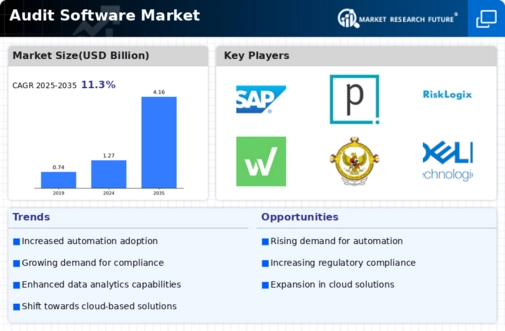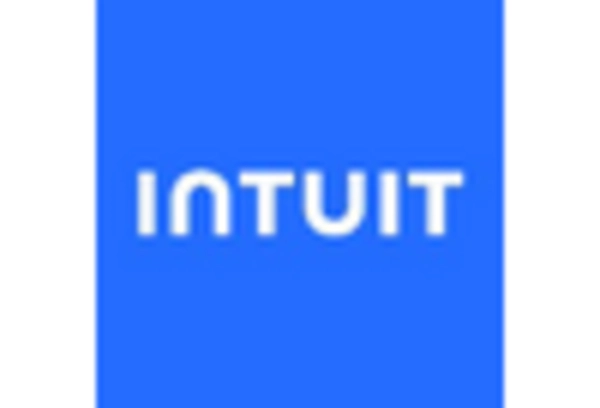Rising Cybersecurity Concerns
Rising cybersecurity concerns are significantly influencing the Audit Software Market. As cyber threats become more sophisticated, organizations are prioritizing the security of their financial data. This trend is prompting a surge in demand for audit software that includes advanced cybersecurity features. The market for cybersecurity-focused audit solutions is expected to witness a growth rate of approximately 12% annually over the next few years. Organizations are increasingly seeking software that not only facilitates auditing but also protects sensitive information from potential breaches. This dual focus on auditing and cybersecurity is likely to drive innovation and investment in the Audit Software Market, as businesses strive to safeguard their assets while maintaining compliance.
Expansion of Cloud-Based Solutions
The expansion of cloud-based solutions is a pivotal driver in the Audit Software Market. Cloud technology offers organizations enhanced flexibility, scalability, and cost-effectiveness, making it an attractive option for audit processes. The market for cloud-based audit software is projected to grow significantly, with estimates indicating a potential increase to 4 billion dollars by 2026. This growth is fueled by the increasing adoption of remote work and the need for accessible audit solutions that can be utilized from various locations. Furthermore, cloud-based audit software often includes features such as automatic updates and real-time collaboration, which are appealing to organizations aiming to streamline their auditing processes. As a result, the shift towards cloud-based solutions is likely to continue shaping the landscape of the Audit Software Market.
Growing Demand for Real-Time Auditing
The growing demand for real-time auditing is reshaping the Audit Software Market. Organizations are increasingly recognizing the value of continuous monitoring and real-time insights into their financial data. This trend is reflected in the rising investments in audit software that offers real-time analytics and reporting capabilities. According to recent estimates, the market for real-time auditing solutions is anticipated to expand at a compound annual growth rate of 15% over the next five years. This shift towards real-time auditing not only enhances transparency but also enables organizations to respond swiftly to potential issues, thereby improving overall risk management. Consequently, the demand for audit software that supports real-time functionalities is expected to surge.
Integration of Artificial Intelligence
The integration of artificial intelligence (AI) into the Audit Software Market is transforming traditional auditing processes. AI technologies enhance data analysis capabilities, enabling auditors to identify anomalies and patterns with greater accuracy. This shift is evidenced by a projected increase in the adoption of AI-driven audit solutions, which is expected to reach a market value of approximately 2 billion dollars by 2026. The ability of AI to automate repetitive tasks allows auditors to focus on more strategic activities, thereby increasing efficiency and reducing the time required for audits. As organizations seek to leverage AI for improved decision-making, the demand for AI-integrated audit software is likely to grow, driving innovation within the Audit Software Market.
Increased Focus on Regulatory Compliance
The heightened focus on regulatory compliance is a significant driver in the Audit Software Market. As regulatory frameworks become more complex, organizations are compelled to adopt robust audit solutions to ensure compliance with various standards. The market for compliance-focused audit software is projected to grow substantially, with estimates suggesting a value of over 3 billion dollars by 2025. This growth is driven by the need for organizations to mitigate risks associated with non-compliance, which can lead to severe financial penalties and reputational damage. Consequently, audit software that incorporates compliance management features is becoming increasingly essential for businesses aiming to navigate the intricate landscape of regulations effectively.









Leave a Comment